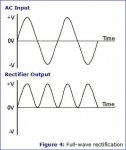tpbeebejr
Cadet
- Joined
- Jun 27, 2013
- Messages
- 25
Below are the numbers for my 9.9 HP Honda outboard:
Product Identification Number: BABJ-1,608,742
Engine Serial Number: BEABJ-1,035,329
Model Number: BF9.9D/10D (SHA)
Model Year: 2009 I think
1.) I want to use the 12-volt DC charging feature of my Honda outboard. First of all, can someone please verify that my model should indeed have several amps (6 DC max amps) of 12-VDC available at the charging plug WITHOUT needing to buy any additional add-on components? The Owners Manual says that I should be able to charge a battery when the engine is running.
Symptoms: I cannot measure any DC voltage at the charging plug on the front of the motor when the motor is running at idle or at higher RPMs. The voltage is 0.0. Following the wires all the way back I have verified that the 20-A fuse in the +12-V red wire is OK, and that there is also no DC voltage between the upstream side of the fuse and ground. I have also followed the same wire (which becomes white upstream of the fuse housing) further upstream of that point to the point where it enters what I believe is a voltage regulator/rectifier. It enters a component along with 3 additional green wires, and it is permanently potted in, so there is no access to check any voltages there. The component's part number in the diagram is #5 (31750-ZW9-013).
http://www.boats.net/parts/search/H...K0 SHA/REGULATOR STARTER CABLE (1)/parts.html
2.) Can someone please give me some ideas for how to troubleshoot this problem further? Is the problem likely to be part #5, or is it likely to be something else? The motor runs fine and starts every time on the first or second pull.
3.) When I check the online parts diagrams, there are two different line items for what appears to be the same part #5 listed in the table. The descriptions are slightly different. Can someone please explain this? Is this the part that I will likely need to replace, and if so, which one do I need?
Thanks,
Tom
Product Identification Number: BABJ-1,608,742
Engine Serial Number: BEABJ-1,035,329
Model Number: BF9.9D/10D (SHA)
Model Year: 2009 I think
1.) I want to use the 12-volt DC charging feature of my Honda outboard. First of all, can someone please verify that my model should indeed have several amps (6 DC max amps) of 12-VDC available at the charging plug WITHOUT needing to buy any additional add-on components? The Owners Manual says that I should be able to charge a battery when the engine is running.
Symptoms: I cannot measure any DC voltage at the charging plug on the front of the motor when the motor is running at idle or at higher RPMs. The voltage is 0.0. Following the wires all the way back I have verified that the 20-A fuse in the +12-V red wire is OK, and that there is also no DC voltage between the upstream side of the fuse and ground. I have also followed the same wire (which becomes white upstream of the fuse housing) further upstream of that point to the point where it enters what I believe is a voltage regulator/rectifier. It enters a component along with 3 additional green wires, and it is permanently potted in, so there is no access to check any voltages there. The component's part number in the diagram is #5 (31750-ZW9-013).
http://www.boats.net/parts/search/H...K0 SHA/REGULATOR STARTER CABLE (1)/parts.html
2.) Can someone please give me some ideas for how to troubleshoot this problem further? Is the problem likely to be part #5, or is it likely to be something else? The motor runs fine and starts every time on the first or second pull.
3.) When I check the online parts diagrams, there are two different line items for what appears to be the same part #5 listed in the table. The descriptions are slightly different. Can someone please explain this? Is this the part that I will likely need to replace, and if so, which one do I need?
Thanks,
Tom




















